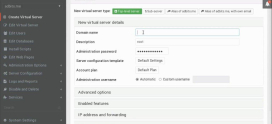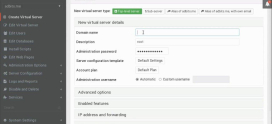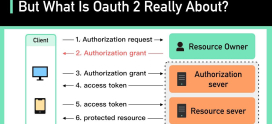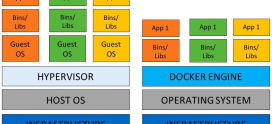Best Practices for Securing eCommerce Servers
In today’s digital world, venturing into eCommerce can feel like stepping into a vast ocean of opportunity. You probably have a fantastic product to share, a keen vision to bring to life, and dreams of a bustling online shop. But here’s the catch: have you stopped to consider how to protect that online treasure? If the idea of cyber threats keeps you up at night, rest assured, you’re not alone. Every day, small and large businesses alike face the daunting task of keeping their eCommerce servers secure from a myriad of potential threats. It’s enough to make anyone anxious, isn’t it? But don’t worry—armed with the right strategies, you can fortify your digital storefront like a seasoned sailor navigating through rough seas.
As cyberattacks increase in sophistication, it’s crucial to arm yourself with knowledge to keep your eCommerce business safe. Just like securing your front door at home or putting on a seatbelt in your car, securing your online store is about being one step ahead. In this article, we’ll walk you through practical tips and best practices to secure your eCommerce servers. By the end, you’ll feel empowered to protect your digital space and your customers’ data. Ready to dive in? Let’s get started!
Understanding the Risks
Before we discuss how to secure your eCommerce servers, it’s essential to understand what you’re up against. Cyber threats are widespread and can manifest in many forms.
Types of Cyber Threats
- Malware Attacks: Malicious software that can infiltrate your system and cause data breaches.
- DDoS Attacks: Overloading your server with traffic to disrupt service.
- Phishing Attacks: Deceptive attempts to obtain sensitive info, often through fake websites.
Understanding these threats is the first step in combating them. Awareness allows you to be proactive rather than reactive, ultimately fostering a safer online atmosphere for your customers.
Regular Software Updates
Think of your server like a house: just as a home needs regular maintenance to stay safe and secure, your software requires updates. Software developers frequently release updates that patch vulnerabilities and improve security. But how often do you check for updates?
Automate Updates
Consider setting up your system for automatic updates. This way, you can focus on growing your business rather than worrying about whether your software is up-to-date or not. Just like changing the batteries in your smoke detector, it’s a quick task that can make a big difference in your security.
Implement Strong Authentication Practices
One of the easiest ways to fortify your eCommerce server is by implementing strong authentication methods. Do you use the same password for every account? If so, it’s time to change that habit!
Password Policies
Encourage your team to utilize complex passwords that include numbers, symbols, and both uppercase and lowercase letters. Additionally, consider enforcing a password expiration policy. Just like a fine wine, some things don’t age well—especially passwords!
Two-Factor Authentication
Adding two-factor authentication (2FA) is like having a second lock on your door—offering an extra layer of security. This could be a text message code, an authentication app, or even biometrics. With 2FA, even if someone manages to get hold of the password, they won’t be able to access the server.
Secure Your Network
Security goes beyond just the server; it includes ensuring your entire network is secure. If your Wi-Fi is not protected, anyone could gain access to your sensitive data.
Firewalls
Implementing a firewall is akin to having a security guard at your store entrance. A firewall will monitor traffic and can block malicious access attempts before they even reach your server.
Network Segmentation
Consider segmenting your network; this means dividing it into smaller sub-networks. This reduces the risk significantly—if one part is compromised, the others remain secure. It’s like having separate rooms in your house; you wouldn’t want intruders to have the run of the whole place just because they got into one room!
Data Encryption
When it comes to protecting sensitive data, encryption is your best friend. Just like a coded message that only you and your recipient can understand, encryption scrambles data into a format that can’t be read without a decryption key.
SSL Certificates
Implementing SSL (Secure Sockets Layer) certificates is a vital step for eCommerce sites. This ensures that transactions between your customers and your server are encrypted and secure. In layman’s terms, it helps keep credit card information and other sensitive details protected from prying eyes.
Regular Security Audits
Scheduling regular security audits is like having a health check-up for your business. It allows you to assess your security posture and identify areas for improvement.
Third-Party Services
Consider enlisting the help of expert security firms like DarazHost that specialize in conducting security audits. These professionals are well-versed in identifying vulnerabilities and can provide tailored solutions to your specific needs.
User Training and Awareness
Your employees are your front line in maintaining security. Just as a well-trained team can make a crucial difference in a sporting event, a knowledgeable team can help bolster your business’s cybersecurity.
Conduct Training Sessions
Regular training sessions about phishing attacks, social engineering, and secure handling of data can significantly reduce risk. It’s important to cultivate a culture of security awareness where everyone feels responsible.
Backup Data Regularly
Imagine losing years of hard work and valuable data because of an attack. It’s a nightmare scenario for any business! Planning for the worst-case scenario through data backups can mitigate this risk.
Backup Solutions
Implement automated backup solutions that can save copies of your critical data. Store these backups securely—preferably in a different location or on cloud services. If an attack does happen, you’ll have a safety net to fall back on.
Monitor Your Servers
Keep a watchful eye on your server activities. Monitoring your server is like having security cameras in your store; they can help you see suspicious activities in real-time.
Log Management Tools
Utilizing log management tools will give you insights into traffic patterns and potential threats. Regularly reviewing these logs can help alert you to suspicious activities early.
Customer Support and Incident Response
In the unfortunate event that an attack occurs, having a response plan is crucial. Think of it like having a fire drill—knowing what to do when an emergency strikes can make all the difference.
Create an Incident Response Plan
Your incident response plan should outline specific actions to take during different types of breaches. Make sure your team knows who to contact and how to handle the situation. Keeping lines of communication open can reduce panic and preserve customer trust.
Stay Informed About Security Trends
The cyber landscape is ever-evolving. Just as you wouldn’t blindly wander in a game without knowing the rules, ensure you stay updated on the latest security trends and threats that could affect your eCommerce business.
Subscribe to Security Newsletters
Consider subscribing to security journals or blogs that give you insights and updates. Knowledge is power, and staying informed will help you make better decisions for your business.
Conclusion
Securing your eCommerce servers might seem like a daunting task, but with these best practices, you’re not alone in this endeavor! It’s like arming yourself with a shield against potential threats that could jeopardize your hard work and your customers’ trust. Remember, taking proactive steps today helps you avoid significant headaches tomorrow. So, start implementing these strategies, and create a secure environment for your online store and its users. After all, a secure server is a happy server—and that means happier customers!
Frequently Asked Questions
1. What are the most common threats to eCommerce servers? Common threats include malware, DDoS attacks, and phishing attempts aimed at stealing sensitive data.
2. Why is regular software updates important? Regular updates patch vulnerabilities, fixing security flaws before they can be exploited.
3. How does two-factor authentication enhance security? It adds an extra verification step during the login process, making unauthorized access much harder.
4. What should I do if my server gets compromised? Follow your incident response plan, contact relevant stakeholders, and seek professional help if necessary.
5. How can I ensure my customers’ data remains secure? Implement SSL certificates, encrypt sensitive data, and frequently back up your databases to secure your customers’ information.









